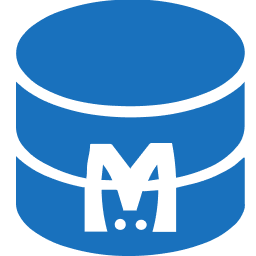You are looking at the documentation of a prior release. To read the documentation of the latest release, please
visit here.
New to KubeDB? Please start here.
Vertical Scale MongoDB Replicaset
This guide will show you how to use KubeDB Enterprise operator to update the resources of a MongoDB replicaset database.
Before You Begin
At first, you need to have a Kubernetes cluster, and the
kubectlcommand-line tool must be configured to communicate with your cluster. If you do not already have a cluster, you can create one by using kind.Install
KubeDBCommunity and Enterprise operator in your cluster following the steps here.You should be familiar with the following
KubeDBconcepts:
To keep everything isolated, we are going to use a separate namespace called demo throughout this tutorial.
$ kubectl create ns demo
namespace/demo created
Note: YAML files used in this tutorial are stored in docs/examples/mongodb directory of kubedb/docs repository.
Apply Vertical Scaling on Sharded Database
Here, we are going to deploy a MongoDB sharded database using a supported version by KubeDB operator. Then we are going to apply vertical scaling on it.
Prepare MongoDB Sharded Database
Now, we are going to deploy a MongoDB sharded database with version 3.6.8.
Deploy MongoDB Sharded Database
In this section, we are going to deploy a MongoDB sharded database. Then, in the next sections we will update the resources of various components (mongos, shard, configserver etc.) of the database using MongoDBOpsRequest CRD. Below is the YAML of the MongoDB CR that we are going to create,
apiVersion: kubedb.com/v1alpha2
kind: MongoDB
metadata:
name: mg-sharding
namespace: demo
spec:
version: 3.6.8-v1
shardTopology:
configServer:
replicas: 2
storage:
resources:
requests:
storage: 1Gi
storageClassName: standard
mongos:
replicas: 2
shard:
replicas: 2
shards: 3
storage:
resources:
requests:
storage: 1Gi
storageClassName: standard
Let’s create the MongoDB CR we have shown above,
$ kubectl create -f https://github.com/kubedb/docs/raw/v2020.10.27-rc.1/docs/examples/mongodb/scaling/mg-shard.yaml
mongodb.kubedb.com/mg-sharding created
Now, wait until mg-sharding has status Running. i.e,
$ kubectl get mg -n demo
NAME VERSION STATUS AGE
mg-sharding 3.6.8-v1 Running 8m51s
Let’s check the Pod containers resources of various components (mongos, shard, configserver etc.) of the database,
$ kubectl get pod -n demo mg-sharding-mongos-0 -o json | jq '.spec.containers[].resources'
{}
$ kubectl get pod -n demo mg-sharding-configsvr-0 -o json | jq '.spec.containers[].resources'
{}
$ kubectl get pod -n demo mg-sharding-shard0-0 -o json | jq '.spec.containers[].resources'
{}
You can see all the Pod of mongos, configserver and shard has empty resources that means the scheduler will choose a random node to place the container of the Pod on by default.
We are now ready to apply the MongoDBOpsRequest CR to update the resources of mongos, configserver and shard nodes of this database.
Vertical Scaling of Shard
Here, we are going to update the resources of the shard of the database to meet the desired resources after scaling.
Create MongoDBOpsRequest for shard
In order to update the resources of the shard nodes, we have to create a MongoDBOpsRequest CR with our desired resources. Below is the YAML of the MongoDBOpsRequest CR that we are going to create,
apiVersion: ops.kubedb.com/v1alpha1
kind: MongoDBOpsRequest
metadata:
name: mops-vscale-shard
namespace: demo
spec:
type: VerticalScaling
databaseRef:
name: mg-sharding
verticalScaling:
shard:
requests:
memory: "150Mi"
cpu: "0.1"
limits:
memory: "250Mi"
cpu: "0.2"
configServer:
requests:
memory: "150Mi"
cpu: "0.1"
limits:
memory: "250Mi"
cpu: "0.2"
mongos:
requests:
memory: "150Mi"
cpu: "0.1"
limits:
memory: "250Mi"
cpu: "0.2"
Here,
spec.databaseRef.namespecifies that we are performing vertical scaling operation onmops-vscale-sharddatabase.spec.typespecifies that we are performingVerticalScalingon our database.spec.VerticalScaling.shardspecifies the desired resources after scaling for the shard nodes.spec.VerticalScaling.configServerspecifies the desired resources after scaling for the configServer nodes.spec.VerticalScaling.mongosspecifies the desired resources after scaling for the mongos nodes.
Note: If you don’t want to scale all the components together, you can only specify the components (shard, configServer and mongos) that you want to scale.
Let’s create the MongoDBOpsRequest CR we have shown above,
$ kubectl apply -f https://github.com/kubedb/docs/raw/v2020.10.27-rc.1/docs/examples/mongodb/scaling/vertical-scaling/mops-vscale-shard.yaml
mongodbopsrequest.ops.kubedb.com/mops-vscale-shard created
Verify MongoDB Shard resources updated successfully
If everything goes well, KubeDB Enterprise operator will update the resources of MongoDB object and related StatefulSets and Pods of shard nodes.
Let’s wait for MongoDBOpsRequest to be Successful. Run the following command to watch MongoDBOpsRequest CR,
$ kubectl get mongodbopsrequest -n demo
Every 2.0s: kubectl get mongodbopsrequest -n demo
NAME TYPE STATUS AGE
mops-vscale-shard VerticalScaling Successful 8m21s
We can see from the above output that the MongoDBOpsRequest has succeeded. If we describe the MongoDBOpsRequest we will get an overview of the steps that were followed to scale the database.
$ kubectl describe mongodbopsrequest -n demo mops-vscale-shard
Name: mops-vscale-shard
Namespace: demo
Labels: <none>
Annotations: <none>
API Version: ops.kubedb.com/v1alpha1
Kind: MongoDBOpsRequest
Metadata:
Creation Timestamp: 2020-09-21T04:51:47Z
Generation: 1
Managed Fields:
API Version: ops.kubedb.com/v1alpha1
Fields Type: FieldsV1
fieldsV1:
f:metadata:
f:annotations:
.:
f:kubectl.kubernetes.io/last-applied-configuration:
f:spec:
.:
f:databaseRef:
.:
f:name:
f:type:
f:verticalScaling:
.:
f:configServer:
.:
f:limits:
.:
f:memory:
f:requests:
.:
f:memory:
f:mongos:
.:
f:limits:
.:
f:memory:
f:requests:
.:
f:memory:
f:shard:
.:
f:limits:
.:
f:memory:
f:requests:
.:
f:memory:
Manager: kubectl-client-side-apply
Operation: Update
Time: 2020-09-21T04:51:47Z
API Version: ops.kubedb.com/v1alpha1
Fields Type: FieldsV1
fieldsV1:
f:spec:
f:verticalScaling:
f:configServer:
f:limits:
f:cpu:
f:requests:
f:cpu:
f:mongos:
f:limits:
f:cpu:
f:requests:
f:cpu:
f:shard:
f:limits:
f:cpu:
f:requests:
f:cpu:
f:status:
.:
f:conditions:
f:observedGeneration:
f:phase:
Manager: kubedb-enterprise
Operation: Update
Time: 2020-09-21T05:01:30Z
Resource Version: 680319
Self Link: /apis/ops.kubedb.com/v1alpha1/namespaces/demo/mongodbopsrequests/mops-vscale-shard
UID: bd3967d6-9671-4e0f-a1df-67622dac1579
Spec:
Database Ref:
Name: mg-sharding
Type: VerticalScaling
Vertical Scaling:
Config Server:
Limits:
Cpu: 0.2
Memory: 250Mi
Requests:
Cpu: 0.1
Memory: 150Mi
Mongos:
Limits:
Cpu: 0.2
Memory: 250Mi
Requests:
Cpu: 0.1
Memory: 150Mi
Shard:
Limits:
Cpu: 0.2
Memory: 250Mi
Requests:
Cpu: 0.1
Memory: 150Mi
Status:
Conditions:
Last Transition Time: 2020-09-21T04:51:47Z
Message: MongoDB ops request is vertically scaling database
Observed Generation: 1
Reason: VerticalScaling
Status: True
Type: VerticalScaling
Last Transition Time: 2020-09-21T04:51:47Z
Message: Successfully halted mongodb: mg-sharding
Observed Generation: 1
Reason: HaltDatabase
Status: True
Type: HaltDatabase
Last Transition Time: 2020-09-21T04:51:47Z
Message: Successfully updated StatefulSets Resources
Observed Generation: 1
Reason: UpdateStatefulSetResources
Status: True
Type: UpdateStatefulSetResources
Last Transition Time: 2020-09-21T04:53:27Z
Message: Successfully Vertically Scaled ConfigServer Resources
Observed Generation: 1
Reason: UpdateConfigServerResources
Status: True
Type: UpdateConfigServerResources
Last Transition Time: 2020-09-21T05:00:25Z
Message: Successfully Vertically Scaled Shard Resources
Observed Generation: 1
Reason: UpdateShardResources
Status: True
Type: UpdateShardResources
Last Transition Time: 2020-09-21T05:01:30Z
Message: Successfully Vertically Scaled Mongos Resources
Observed Generation: 1
Reason: UpdateMongosResources
Status: True
Type: UpdateMongosResources
Last Transition Time: 2020-09-21T05:01:30Z
Message: Successfully Resumed mongodb: mg-sharding
Observed Generation: 1
Reason: ResumeDatabase
Status: True
Type: ResumeDatabase
Last Transition Time: 2020-09-21T05:01:30Z
Message: Successfully Vertically Scaled Database
Observed Generation: 1
Reason: Successful
Status: True
Type: Successful
Observed Generation: 1
Phase: Successful
Events:
Type Reason Age From Message
---- ------ ---- ---- -------
Normal UpdateStatefulSetResources 29m KubeDB Enterprise Operator Successfully updated StatefulSets Resources
Normal HaltDatabase 29m KubeDB Enterprise Operator Successfully Halted MongoDB mg-sharding in Namespace demo
Normal Starting 29m KubeDB Enterprise Operator Updating Resources of StatefulSet: mg-sharding-mongos
Normal Starting 29m KubeDB Enterprise Operator Updating Resources of StatefulSet: mg-sharding-configsvr
Normal Starting 29m KubeDB Enterprise Operator Updating Resources of StatefulSet: mg-sharding-shard0
Normal Starting 29m KubeDB Enterprise Operator Updating Resources of StatefulSet: mg-sharding-shard1
Normal Starting 29m KubeDB Enterprise Operator Updating Resources of StatefulSet: mg-sharding-shard2
Normal HaltDatabase 29m KubeDB Enterprise Operator Pausing MongoDB mg-sharding in Namespace demo
Normal UpdateConfigServerResources 28m KubeDB Enterprise Operator Successfully Vertically Scaled ConfigServer Resources
Normal UpdateShardResources 21m KubeDB Enterprise Operator Successfully Vertically Scaled Shard Resources
Normal UpdateMongosResources 20m KubeDB Enterprise Operator Successfully Vertically Scaled Mongos Resources
Normal ResumeDatabase 20m KubeDB Enterprise Operator Resuming MongoDB
Normal ResumeDatabase 20m KubeDB Enterprise Operator Successfully Resumed mongodb
Normal Successful 20m KubeDB Enterprise Operator Successfully Vertically Scaled Database
Normal Successful 20m KubeDB Enterprise Operator Successfully Vertically Scaled Database
Now, we are going to verify from one of the Pod yaml whether the resources of the shard nodes has updated to meet up the desired state, Let’s check,
$ kubectl get pod -n demo mg-sharding-shard0-0 -o json | jq '.spec.containers[].resources' 12:56:06
{
"limits": {
"cpu": "200m",
"memory": "250Mi"
},
"requests": {
"cpu": "100m",
"memory": "150Mi"
}
}
$ kubectl get pod -n demo mg-sharding-configsvr-0 -o json | jq '.spec.containers[].resources'
{
"limits": {
"cpu": "200m",
"memory": "250Mi"
},
"requests": {
"cpu": "100m",
"memory": "150Mi"
}
}
$ kubectl get pod -n demo mg-sharding-mongos-0 -o json | jq '.spec.containers[].resources'
{
"limits": {
"cpu": "200m",
"memory": "250Mi"
},
"requests": {
"cpu": "100m",
"memory": "150Mi"
}
}
The above output verifies that we have successfully scaled the resources of all components of the MongoDB sharded database.
Cleaning Up
To clean up the Kubernetes resources created by this tutorial, run:
kubectl delete mg -n demo mg-shard
kubectl delete mongodbopsrequest -n demo mops-vscale-shard



































